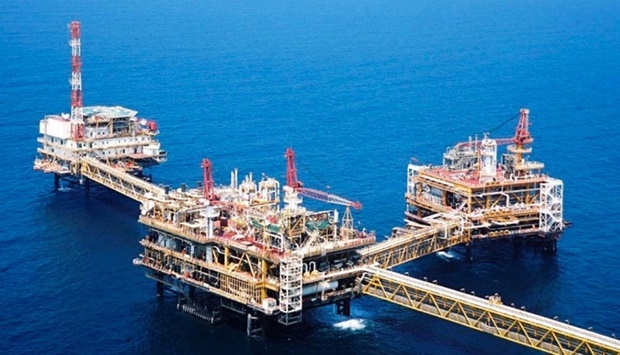Global insurance rating agency AM Best has revised the outlook of the insurance sector in the Gulf Co-operation Council (GCC) to "stable" from "negative", driven by rallying oil prices driving economic recovery across the region, increased opportunities for the insurance sector growth and recovering financial markets.
In late-February 2022, oil prices hit an eight-year high on Ukraine-Russian crisis. For the first time since 2014, the price of Brent crude exceeded $100 per barrel, in sharp contrast to the lows in early 2020 of $20.
Rising oil prices are attributed to supply concerns amidst excess demand for oil, as the countries emerge from periods of pandemic-related measures, it said, adding the economies of the GCC are highly sensitive to oil price changes, and there is a correlation between oil prices and growth in GDP (gross domestic product).
Sustained higher oil prices are expected to have a substantial impact on regional economic recovery and public spending capacity across the GCC. As at February 2022, the price of oil on a per barrel basis largely exceeded the estimated fiscal breakeven points of the GCC.
"The increased economic activity and greater governmental fiscal manoeuvrability are positives for the insurance markets of the region," it said.
The rating agency expects the strengthening economic fundamentals to directly contribute to the demand for insurance products in the near term. Many insurance segments in the GCC observed healthier premium growth year-on-year over the first half of 2021.
For many insurers in the GCC, there has historically been at least a partial reliance on public spending -- notably on infrastructure projects—for premium growth opportunities.
"A substantial proportion of commercial property and engineering risks underwritten in the GCC are linked to government-backed initiatives," it said.
Furthermore, these government-related contracts have often been highly profitable for the region’s insurers, providing strong levels of inward reinsurance commission from extensive reinsurance participation.
Outside of the commercial risks segments, as economic activity increases, the demand for insurance protection (particularly in core classes such as motor and medical) will also likely increase, according to AM Best.
On recovering financial markets, it said insurers in the region often carry higher-risk investment portfolios, holding a greater proportion of equity and real estate assets compared with developed market counterparts, in part as a long-term inflation hedge.
This exposed balance sheets to heightened volatility in early 2020, when the GCC equity markets fell by as much as 30%, and fair-value losses were booked.
"However, companies in the region were largely able to absorb these losses owing to the sufficient capital buffers in place.
It said merger and acquisition (M&A) is becoming an increasing feature in the GCC insurance markets, which are" fragmented and competition is widespread."
"Further consolidation could be seen as a tailwind for the GCC’s insurance markets, potentially improving market profitability by reducing pricing competition, driving operational efficiencies from economies of scale and providing inorganic growth opportunities," it said.
However, extensive M&A activity at a level sufficient to alter the competitive landscape may only follow regulatory intervention, for example, from the imposition of increased minimum capital requirements.
In late-February 2022, oil prices hit an eight-year high on Ukraine-Russian crisis. For the first time since 2014, the price of Brent crude exceeded $100 per barrel, in sharp contrast to the lows in early 2020 of $20.
Rising oil prices are attributed to supply concerns amidst excess demand for oil, as the countries emerge from periods of pandemic-related measures, it said, adding the economies of the GCC are highly sensitive to oil price changes, and there is a correlation between oil prices and growth in GDP (gross domestic product).
Sustained higher oil prices are expected to have a substantial impact on regional economic recovery and public spending capacity across the GCC. As at February 2022, the price of oil on a per barrel basis largely exceeded the estimated fiscal breakeven points of the GCC.
"The increased economic activity and greater governmental fiscal manoeuvrability are positives for the insurance markets of the region," it said.
The rating agency expects the strengthening economic fundamentals to directly contribute to the demand for insurance products in the near term. Many insurance segments in the GCC observed healthier premium growth year-on-year over the first half of 2021.
For many insurers in the GCC, there has historically been at least a partial reliance on public spending -- notably on infrastructure projects—for premium growth opportunities.
"A substantial proportion of commercial property and engineering risks underwritten in the GCC are linked to government-backed initiatives," it said.
Furthermore, these government-related contracts have often been highly profitable for the region’s insurers, providing strong levels of inward reinsurance commission from extensive reinsurance participation.
Outside of the commercial risks segments, as economic activity increases, the demand for insurance protection (particularly in core classes such as motor and medical) will also likely increase, according to AM Best.
On recovering financial markets, it said insurers in the region often carry higher-risk investment portfolios, holding a greater proportion of equity and real estate assets compared with developed market counterparts, in part as a long-term inflation hedge.
This exposed balance sheets to heightened volatility in early 2020, when the GCC equity markets fell by as much as 30%, and fair-value losses were booked.
"However, companies in the region were largely able to absorb these losses owing to the sufficient capital buffers in place.
It said merger and acquisition (M&A) is becoming an increasing feature in the GCC insurance markets, which are" fragmented and competition is widespread."
"Further consolidation could be seen as a tailwind for the GCC’s insurance markets, potentially improving market profitability by reducing pricing competition, driving operational efficiencies from economies of scale and providing inorganic growth opportunities," it said.
However, extensive M&A activity at a level sufficient to alter the competitive landscape may only follow regulatory intervention, for example, from the imposition of increased minimum capital requirements.


